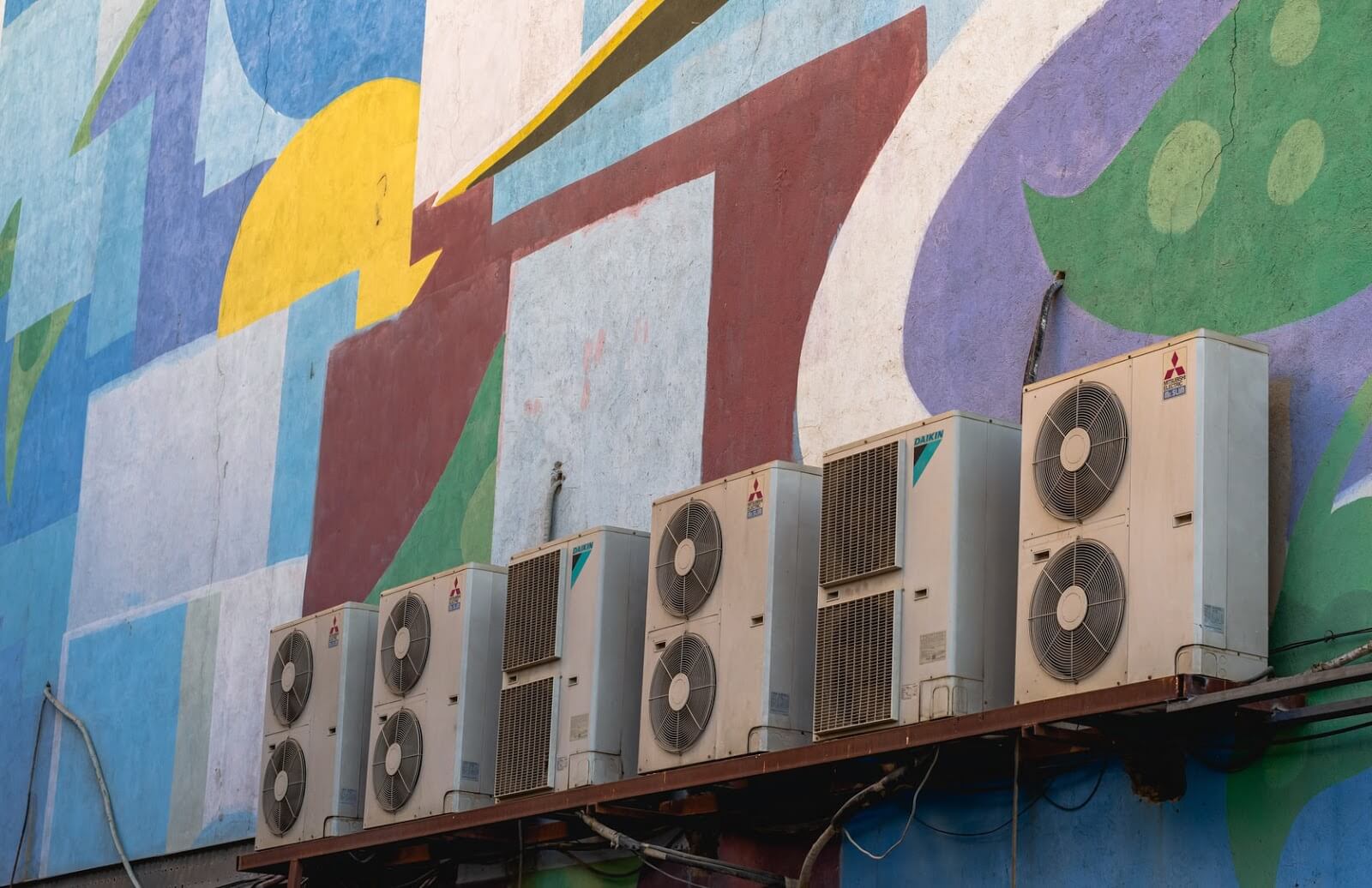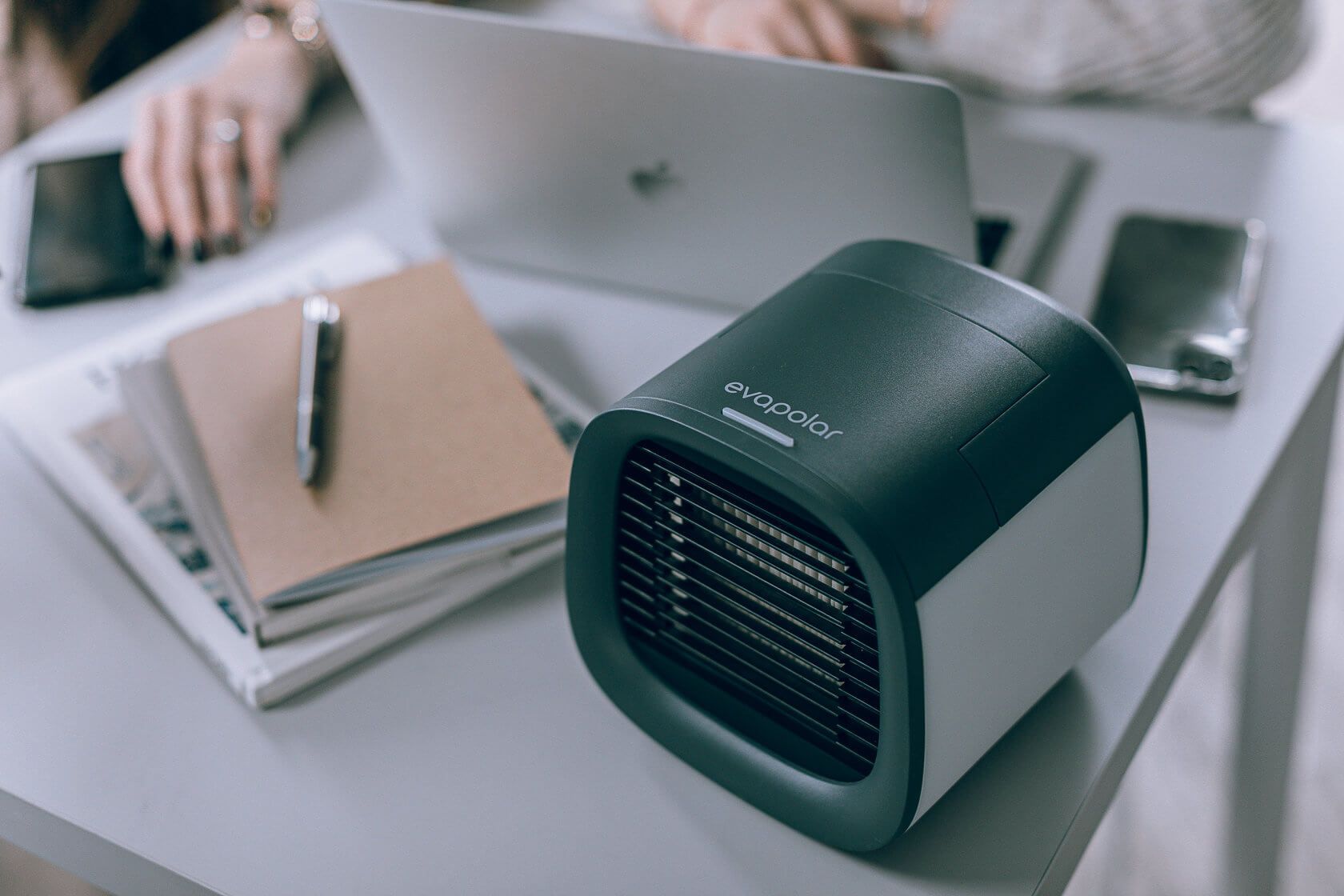Central air conditioning is a technology that can cool down an entire building by distributing cool air through a network of ductwork and fans. You’ve probably seen those massive metal boxes on rooftops and beside houses and commercial buildings.

Looking for AC alternatives?
But if there's no existing duct system at your house, it can be a hassle to install. Thus, our topic for this discussion is alternative methods you can employ that don't require ductwork. Each of these AC alternatives has its very own set of benefits with some offering more than others. Let's delve into that right after we discover what types of central air units exist and why you might want to forgo them.
Content:
- Why Choose a Central Air Conditioning Alternative
- What About Other Types of Air Conditioning?
- Alternative Options to Traditional Air Con Units
- What Is the Best Personal Air Cooler?
- Wrap Up
Why Choose a Central Air Conditioning Alternative

- Cost. Probably the biggest reason to skip on central air and choose one of the air conditioner alternatives is the high price of installation, including any renovations you might require after installation. If you don't already have a mesh of ducts spread throughout the home, it might be best to forgo this option.
- Limited control over temperature. Central air systems are limited in their ability to uniformly control the temperature throughout a home. They often result in cold and hot spots. With AC alternative devices, you can choose different temperature levels in different rooms.
- Ductwork, duct maintenance. Central air units require regular duct maintenance to prevent the overgrowth of mold and bacteria. Maintenance must be done at a minimum of an annual basis. If you don’t already have ductwork, this can be expensive to implement and will be very labor-intensive, requiring the opening up of floors and walls. This is another reason to look for HVAC system alternatives.
What About Other Types of Air Conditioning?

If you’re interested in air conditioning precisely, there are types of AC that don’t require ductwork. These include a ductless split system, window, and portable AC:
- Ductless split system. If you’ve ever seen a metal box with a fan hanging on a building’s wall, that’s the external part of such a system. The internal part that produces the cold air is mounted on a wall. Both modules are connected by electrical wiring and refrigerant tubing.
- Window AC. Also known as a room air conditioner, this device is a ductless split system merged into one box. Its design is meant for fitting into a window.
- Portable air conditioners. These are aircon on wheels. The beauty of a portable version is that you can buy one and use it in any room that corresponds to its BTU rating.
Advantages
- They are highly productive and can cool down a room to the desired temperature.
- Each room can be cooled simultaneously

Disadvantages
- Energy and installation costs can add up.
- They dry out the air, causing all sorts of discomfort for your skin and sinuses.
- Portable models can be too bulky for limited space and too heavy for just anyone to move around.
- Window and portable versions require additional fittings if your windows aren’t vertical sliding ones, increasing costs.
- Any conditioner will cool the entire room — an inconvenience in some cases, as there is no universal ideal temperature for everyone's comfort.
As you can see, any kind of air conditioning has some major drawbacks concerning installation and use. But AC isn’t the only way to cool down yourself or your room.
Alternative Options to Traditional Air Con Units
You can create a more comfortable environment during hot days without using any technology. But later in the article, you will also find information about cooling appliances.
Let’s start with the completely free central AC alternative that is manipulating natural air circulation.
Natural Air Circulation

By simply opening windows on opposite sides of your home, you can improve the air circulation inside and cool down your home. This allows for the air to enter the room through one window and leave through the other, creating a draught. The continuous free flow of air from the outdoors means there should be no build-up of warm air.
If it is safe to do so, you can also open windows at night. This can give better results, as the temperature is cooler at night. However, there are some limitations to this method other than your safety.
Disadvantages
- It stops working once the temperature gets high. There’s no point in creating a draught of warm air. You might be better off closing all the windows and not letting the hot air in.
- Not ideal for areas where outdoor air is highly polluted. You’ll suffer from bad air more than from the heat. And anyway, the general recommendation is to close your windows and stay inside when the air is highly polluted.
So, if using natural air circulation or opting for air conditioning isn’t an option for you, how can you get comfortable in your own home during the hot days? The choice lies between electric fans and swamp coolers.
Electric Fans: Types, Pros & Cons

Fans can be used virtually anywhere, and that includes the outdoors and your car. There’s a variety of options distinguished by size, placement, and features. It's worth mentioning right away that effectiveness in a fan is measured by how well they are blowing air and how far this path can reach.
Types of Electric Fans
Desktop
These have all the properties that allow for use in any location, be it a work desk or a kitchen table. You can even put them on the floor, but mind that they have a small path of air, so their work surface might be limited to your feet. On the plus side, they consume just around 40 watts per hour.
Pedestal
This one stands on a leg with a pedestal. The leg is sometimes telescopic, which makes the height adjustable. Pedestal fans often come with an oscillation feature that can come in handy if you have company, as this feature will make it blow air in different directions. Modern pedestal fans have digital displays and remote controls, unlike their predecessors.
Tower
Tower configurations have a futuristic design and often look nothing like a typical electric fan. These come with an ability to oscillate side to side, which is just an option in other fans, since they distribute air vertically and wouldn’t cover a lot of surfaces otherwise. And they are safe in operation around kids. Some tower fans also have an air purifier option based on the ionization process.
Ceiling
Ceiling fixtures are still an option for many people, so let’s learn more about them. You will commonly find models with anywhere between two and five blades, and some options offer more than that. These blades offer 360-degree constant rotation once powered on.
If you’re considering this type, or maybe you already have one at home, check whether it has a DC motor, as this will make the fan spin both ways. Since warm air goes up and cooler air stays at the floor level, the fan will bring the warm air downwards when rotating counterclockwise. So when the blades are rotating clockwise they pull the air upward.
Fans with AC motors rotate only one way, which makes them less useful all year round.
Advantages of Electric Fans
- Any fan can provide a nice cooling sensation on your skin thanks to the forced air it produces.
- They are readily available pretty much everywhere, and the variety of prices means you don’t usually have to allocate much in your budget.
- They don’t use that much energy, so you can keep them running for a long time without a strain on the utility bills.
That said, they don’t do much cooling, and as we’ve discussed in our previous articles, fans don’t cool the air at all.
Disadvantages of Electric Fans
- They show little to no effectiveness. Fans don’t cool the air. Instead, they simply move it around the room. They don’t have a source of cold, fresh air.
- They dry out the air. The constant flow of air evaporates the moisture without adding anything in return. If your climate is already dry, you might feel thirsty more often, and your skin will need some extra moisturizer.
- They can annoy you with the noise. The constant humming isn’t out of the safe decibel range, but it is likely to get on your nerves and can disrupt your sleep.
- They can be annoying in other ways. A desktop fan can easily blow your stuff off the table. It’s not much fun working if you need to buy paperweights as well.
- They need access to a plug socket. It’s not common for fans to be battery-operated, and those that are usually don’t work well at all.
- They can get too pricey. Considering that they don’t do much to lower the air temperature, some models are significantly overpriced.
There’s one more option for a cooling appliance that uses a fan, has a moisture source that cools down the air, and isn't expensive to buy and maintain — an evaporative cooler.
Swamp Coolers

A swamp cooler is known by several names: an evaporative cooler, a desert cooler, a wet air cooler, or a swamp box. It works to cool the air by the evaporation of water — a natural cooling agent.
This allows for the cooling of the air without using as much energy as with refrigerant agents. Evaporative cooling is especially beneficial in drier climates, as these gadgets also add moisture to the air and create a more comfortable environment.
There are a few types of such coolers distinguished by the space that’s meant to be chilled. Sometimes cooling just your personal space is enough, and then you can opt for a personal evaporative cooler. On the other hand, there are big, bulky options for using outdoors. These can be connected to a water pipe via a hose for a continuous water supply. It’s a good option if your garden requires a specific microclimate.
Advantages of a Swamp Cooler
- They are effective. A swamp cooler can reduce the room temperature by 27 degrees F or 15 degrees C while consuming the same amount of electricity as a fan.
- They also work as a humidifier and purifier. This is great for dry climates, as optimal humidity levels are known to be beneficial to your health. Additionally, water is great at trapping dust and other allergens.
- They are affordably priced. An $80 to $200 price range isn’t outrageous for a device that works well and actually cools the air.
- They are easy to maintain and clean. A swamp cooler doesn’t need professional maintenance unless it’s broken. You just need to rinse the water container frequently and use soapy water from time to time.
Any cons?
- Its humidifying properties are not ideal for humid climates.
- Swamp coolers can be bulky unless you choose a more compact model.
What Is the Best Personal Air Cooler?

There are a lot of mini air coolers on the market, but not all of them work well or last for a long time — especially if you buy one as cheap as a handheld fan.
A great example of a portable compact air cooler is Evapolar — a small, lightweight, and handheld personal device that works from a USB connector. Evapolar is:
- Effective. It works the best in a 4 m2 or 33 feet2 personal space to decrease the temperature of air by 7-10 degrees C (50 F).
- A three-in-one. It humidifies and purifies the air, aside from cooling it.
- Highly portable. It can work from a power bank, which makes it easily transferable, even to a camping site.
Made from durable materials. It also has patented filters from a non-organic material, making it resistant to bacteria buildup. See also best desktop air conditioners.
Wrap Up
Central air conditioning is not the only way you can cool down your room, whether in your home or office. There are many air conditioner alternatives, each with its own set of advantages and disadvantages. Cooling solutions can be very pricey and may also be very labor-intensive to install and get working. Luckily, you have alternatives to HVAC systems.

One of the most cost-effective ways for you to cool your personal space while also achieving the benefits of humidification and purification is with the use of an Evapolar personal evaporative cooler.


